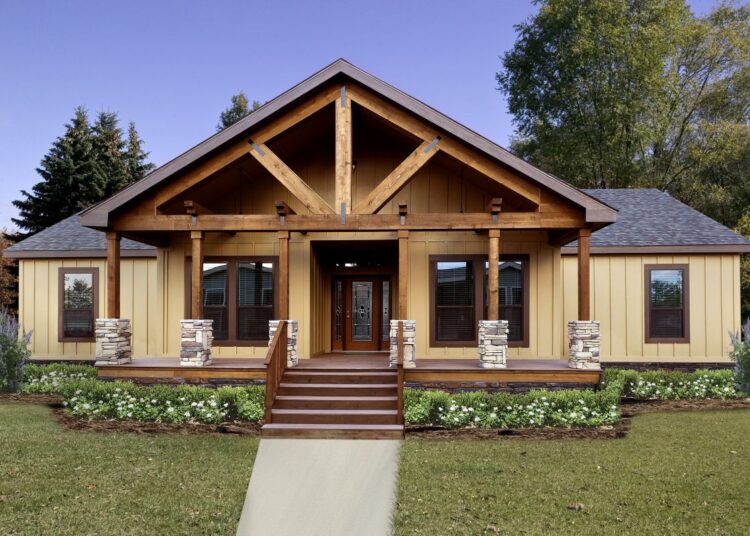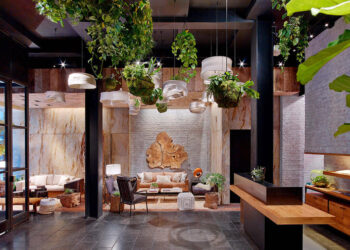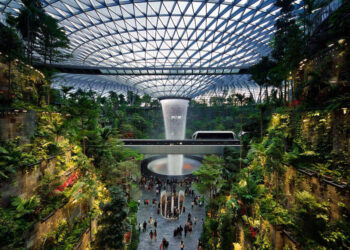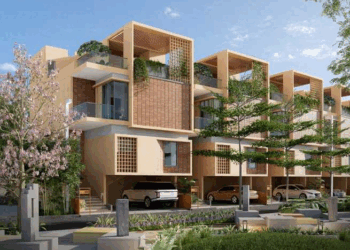The traditional brick-and-mortar approach to construction, often characterized by lengthy timelines, budget overruns, and limited adaptability, is facing a powerful challenger: modular construction. This innovative method, which involves fabricating building components or entire sections off-site in a controlled factory environment, is rapidly reshaping the landscape of residential and commercial development. Far from the simplistic “trailer homes” of the past, modern modular home and office concepts offer unparalleled flexibility, superior quality, rapid deployment, and enhanced sustainability. It’s a paradigm shift that champions efficiency, precision, and adaptability, redefining how we conceive, design, and inhabit our living and working spaces in the 21st century.
The Genesis of Modularity
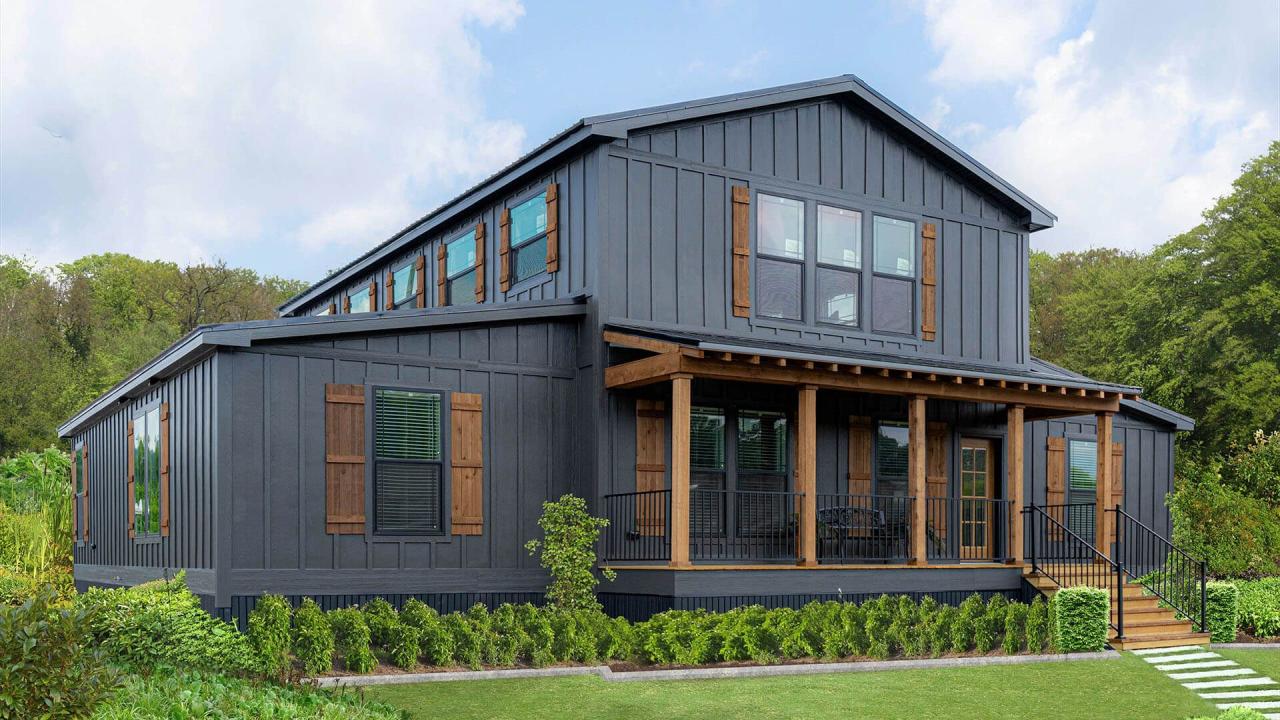
The burgeoning interest in modular construction is not merely a passing trend; it’s a strategic response to a complex interplay of economic, environmental, and societal pressures that demand more efficient and adaptable building solutions.
A. Accelerated Construction Timelines:
A. Concurrent Processes: Unlike traditional construction where site preparation and building happen sequentially, modular construction allows factory fabrication to occur simultaneously with site work (e.g., foundation laying, utility trenching). This concurrency can significantly reduce overall project timelines, often by 30-50%.
B. Weather Independence: Building modules in a controlled indoor environment eliminates delays caused by adverse weather conditions, ensuring consistent progress and predictable completion dates.
C. Streamlined Workflow: Factory environments enable optimized workflows, standardized procedures, and specialized assembly lines, much like car manufacturing, leading to faster production cycles.
B. Enhanced Quality and Precision:
A. Controlled Environment: Fabricating modules indoors protects materials from weather damage, dust, and theft, leading to higher material quality and reduced defects.
B. Advanced Machinery and Robotics: Factories can deploy sophisticated machinery and robotic automation that are impractical on a traditional construction site, resulting in greater precision, tighter tolerances, and superior structural integrity.
C. Rigorous Quality Control: Every step of the modular construction process undergoes stringent quality checks within the factory, often exceeding traditional on-site inspection standards. This minimizes rework and ensures consistent quality.
C. Cost Efficiency and Predictability:
A. Reduced Waste: Factory production generates significantly less waste compared to on-site construction due to precise cutting, optimized material use, and efficient recycling programs. This translates to material cost savings and reduced disposal fees.
B. Labor Efficiency: Modular construction requires a smaller, highly skilled, and often specialized labor force working in a controlled environment, reducing labor costs associated with on-site inefficiencies, travel, and adverse conditions.
C. Predictable Budgets: The standardized nature of modular processes and reduced vulnerability to weather delays or on-site errors leads to more accurate cost estimates and fewer budget overruns. Fixed pricing for factory-built components offers greater financial certainty.
D. Faster ROI: Shorter construction times mean buildings can be occupied and generating revenue sooner, accelerating the return on investment for commercial projects and reducing financing costs for homeowners.
D. Sustainability and Environmental Impact:
A. Minimized Site Disturbance: Off-site construction significantly reduces noise pollution, air pollution, and disruption to the local environment and community around the building site.
B. Reduced Material Waste: As mentioned, factory environments allow for precise material management, recycling, and reduced waste generation. Waste can also be processed centrally.
C. Improved Energy Efficiency: Modular homes and offices are often built with superior insulation, tighter envelopes, and more precise component fitting, leading to enhanced energy performance and lower long-term utility costs. They are inherently designed for higher energy efficiency standards.
D. Sustainable Material Sourcing: Factories can implement stricter controls over the sourcing of sustainable, recycled, or low-VOC (volatile organic compound) materials.
Core Principles of Modular Construction Concepts
Modular construction is defined by a set of guiding principles that ensure its efficiency, quality, and adaptability.
A. Pre-fabrication and Off-Site Assembly
The fundamental characteristic of modular construction.
A. Unitized Construction: Entire rooms or sections of a building are constructed as three-dimensional modules, complete with plumbing, electrical, and finishes, before being transported to the site.
B. Panelized Construction: Walls, floors, and roof sections are manufactured as large, flat panels in a factory and then assembled on-site. This offers a balance between off-site fabrication and on-site assembly.
C. Hybrid Approaches: Combining modular units with site-built components (e.g., a modular core with site-built wings) to optimize cost and design flexibility.
D. Controlled Environment: All fabrication occurs in a weather-protected factory, leading to consistent quality, better worker safety, and reduced material damage.
B. Standardized Yet Customizable Components
Achieving efficiency through repetition while allowing for tailored designs.
A. Standardized Dimensions: Modules often adhere to standardized dimensions to facilitate transportation and assembly, but within these constraints, significant customization is possible.
B. Pre-Engineered Systems: Structural, mechanical, electrical, and plumbing systems are pre-engineered and often integrated into the modules, reducing on-site complexity.
C. Design Flexibility: While modules themselves are standardized, their arrangement, exterior finishes, interior layouts, and custom features can be highly flexible, leading to unique architectural expressions. This dispels the “cookie-cutter” myth.
C. Precision Manufacturing and Quality Control
Leveraging factory conditions for superior outcomes.
A. Automated Processes: Factories utilize advanced machinery, laser cutters, and sometimes robotic assembly for extreme precision, reducing human error.
B. Continuous Inspection: Quality checks are integrated at every stage of the manufacturing process, from raw material inspection to final module assembly, ensuring adherence to strict standards.
C. Minimized Waste: Computer-aided design (CAD) and manufacturing (CAM) optimize material cutting and usage, leading to significant waste reduction compared to traditional methods.
D. Transportation and On-Site Assembly
The logistical aspects of bringing modules together.
A. Logistics Planning: Meticulous planning is required for transporting large modules, considering road clearances, weight limits, and site access.
B. Craning and Connection: Modules are carefully craned into place and connected using specialized fasteners and sealing techniques to ensure structural integrity and weather tightness.
C. Reduced On-Site Work: Once modules are connected, remaining on-site work primarily involves utility hook-ups, exterior finishes, and final interior touches, significantly shortening the overall construction duration.
Modular Home Concepts
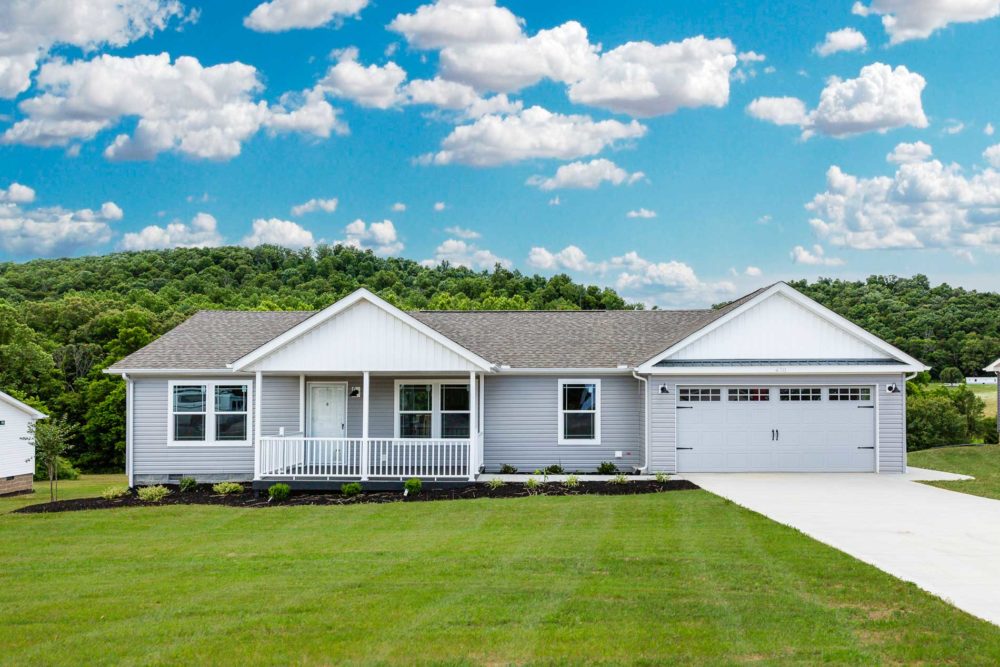
Modular construction is increasingly popular for residential properties, offering solutions for affordable housing, custom homes, and sustainable living.
A. Single-Family Modular Homes
A. Speed of Construction: A modular home can often be completed and ready for occupancy in a fraction of the time compared to a traditional stick-built home (e.g., 3-6 months vs. 9-18 months).
B. Design Variety: Modern modular homes come in a vast array of architectural styles, from traditional to contemporary, dispelling the myth of limited design options. Customization extends to floor plans, exterior finishes (siding, brick, stone), roofing, and interior features.
C. Quality and Durability: Due to factory-controlled conditions and stronger structural requirements for transportation, modular homes are often built to higher quality standards, making them more resilient to adverse weather and natural disasters.
D. Energy Efficiency: Superior insulation and tight construction make modular homes inherently more energy-efficient, leading to lower heating and cooling costs and a smaller carbon footprint. Many modular builders specialize in net-zero or passive house standards.
E. Affordability: While custom modular can be high-end, the efficiency of the modular process often translates to cost savings, making quality housing more accessible.
F. In-fill and Difficult Sites: Modular homes can be ideal for challenging urban in-fill lots or remote sites, where on-site construction is difficult or costly due to limited access or labor availability.
B. Multi-Family Modular Buildings
A. Accelerated Development: Modular construction significantly speeds up the development of apartment complexes, condominiums, and student housing, allowing developers to bring units to market faster.
B. Reduced Site Disruption: Less noise, traffic, and waste on urban construction sites, minimizing impact on surrounding communities.
C. Consistent Quality: Ensures uniform quality across all units in a large development, which can be challenging with traditional multi-story construction.
D. Addressing Housing Shortages: The speed and efficiency of modular construction make it a powerful tool for rapidly addressing housing supply shortages in growing urban areas.
E. Mixed-Use Developments: Modular can be integrated into mixed-use projects, combining residential with retail or office spaces.
C. Disaster Relief and Rapid Deployment Housing
A. Emergency Shelters: Rapidly deployable modular units can provide immediate, durable, and comfortable housing solutions in the aftermath of natural disasters.
B. Temporary Worker Housing: Modular units are frequently used for temporary accommodations for construction crews, military personnel, or resource extraction workers in remote locations.
C. Affordable Housing Initiatives: Governments and non-profits are increasingly utilizing modular construction for quickly developing cost-effective and dignified affordable housing solutions.
Modular Office Concepts
Modular construction is transforming how businesses envision and develop their office environments, offering unprecedented speed, flexibility, and adaptability.
A. Scalable Office Solutions
A. Rapid Expansion: Businesses can quickly add new modular office units or floors as they grow, significantly reducing downtime and disruption compared to traditional office build-outs.
B. Temporary Offices: Modular units provide excellent solutions for temporary office spaces during renovations, for construction site offices, or for pop-up business needs.
C. Agile Space Management: Companies can easily reconfigure their office layouts by adding, removing, or relocating modular walls and spaces, adapting to changing team structures or work styles (e.g., transition from traditional to open-plan or hybrid models).
B. Specialty Workspaces and Pods
A. Acoustic Pods: Pre-fabricated modular phone booths or small meeting pods offer instant privacy and sound dampening within open-plan offices, crucial for concentration and confidential calls.
B. Modular Meeting Rooms: Quickly assembled meeting rooms with integrated AV and connectivity, offering flexibility for dynamic office needs.
C. Pop-Up Retail/Showrooms: Modular units can create temporary or permanent retail spaces, showrooms, or event booths that are rapidly deployable and aesthetically customizable.
D. Remote Work Hubs: Companies can deploy modular office hubs in suburban areas, offering employees a professional workspace closer to home, reducing commutes and supporting hybrid work models.
C. Sustainable and Healthy Workplaces
A. High Energy Performance: Modular offices are often designed to high energy efficiency standards, reducing operational costs and carbon emissions.
B. Improved Indoor Air Quality: Factory-built components often use low-VOC materials and rigorous air sealing, contributing to healthier indoor environments.
C. Reduced Site Disruption: Less construction noise, dust, and traffic on-site, creating a better environment for existing employees and neighboring businesses.
D. Waste Reduction: Significantly less construction waste sent to landfills, aligning with corporate sustainability goals.
D. Data Centers and Specialized Facilities
A. Rapid Deployment: Modular data centers can be built and deployed much faster than traditional data centers, critical for businesses with rapidly expanding computing needs.
B. Scalability: Capacity can be easily expanded by adding more modular data center units as demand increases.
C. Controlled Environment: Precision manufacturing ensures optimal climate control and security for sensitive equipment.
The Process of Modular Construction
Understanding the typical steps involved in modular construction highlights its efficiency and unique advantages.
A. Design and Planning:
A. Conceptual Design: Working with architects and modular manufacturers to design the building, considering size, layout, aesthetics, and specific functional requirements.
B. Module Breakdown: The design is broken down into individual modules, ensuring they are transportable and can be efficiently produced in the factory.
C. Permitting: Obtaining necessary permits for both the factory fabrication and the on-site installation, often running concurrently.
B. Factory Fabrication:
A. Frame Assembly: Steel or wood frames for each module are constructed on an assembly line.
B. Systems Installation: Electrical wiring, plumbing, HVAC ducts, insulation, and windows are installed within the module.
C. Interior Finishes: Drywall, flooring, cabinetry, fixtures, and interior painting are completed in the factory.
D. Quality Control: Each module undergoes rigorous quality inspections at various stages, ensuring compliance with building codes and design specifications.
C. Site Preparation:
A. Foundation Laying: While modules are being built in the factory, the building site is prepared, including excavation, utility trenching, and foundation pouring.
B. Utility Connections: Necessary water, sewer, electrical, and data lines are brought to the foundation.
C. Accessibility: Ensuring clear access for cranes and transport vehicles.
D. Transportation and Installation:
A. Module Transport: Completed modules are carefully loaded onto specialized carriers and transported to the building site. This phase requires meticulous logistics planning.
B. Craning and Placement: A large crane lifts and precisely positions each module onto the prepared foundation or onto previously installed modules.
C. Stitching and Sealing: Modules are “stitched” together, connecting structural elements, sealing seams, and making all utility hook-ups. Weatherproofing is crucial at this stage.
Challenges and Considerations in Modular Construction
Despite its numerous advantages, modular construction faces certain challenges that developers and clients must consider.
A. Perception and Stigma: Historically, modular homes were associated with lower quality or “trailers,” a stigma that modern, high-quality modular construction is actively working to overcome.
B. Transportation Logistics: Transporting large, heavy modules can be complex, requiring wide load permits, road closures, and careful route planning, especially in dense urban areas.
C. Financing and Insurance: Some lenders or insurance providers may be less familiar with modular construction, potentially leading to initial difficulties in securing financing or different insurance rates, though this is changing rapidly.
D. Design Limitations (Perceived): While customization is extensive, there can be certain design limitations imposed by transportable module sizes or connection points. Complex cantilevered designs or highly unusual geometries might be more challenging.
E. Site Preparation Criticality: Precise and timely site preparation is absolutely crucial. Delays on site can be very costly if finished modules are waiting for installation.
The Future of Hyper-Flexible and Sustainable Modularity
The trajectory of modular construction points towards an even more advanced, integrated, and pervasive role in shaping our future environments.
A. Mass Customization and Advanced Manufacturing
A. Robotics and Automation: Increased use of advanced robotics, AI-driven manufacturing, and automated assembly lines in modular factories for even greater precision, speed, and customization capabilities.
B. 3D Printing Integration: Large-scale 3D printing of structural components or even entire small modules, particularly for affordable housing or rapid deployment scenarios, offering unprecedented design freedom and material efficiency.
C. Personalized Modules: Customers will have highly sophisticated online configurators to design their ideal homes or office spaces, selecting modules, finishes, and smart home integrations in a truly mass-customized approach.
B. Smart Modules and Integrated Systems
A. Plug-and-Play Intelligence: Modules will come pre-integrated with smart home/office technologies (IoT sensors, smart lighting, automated climate control, integrated AV systems), ready to connect upon assembly, creating “smart out of the box” buildings.
B. Data-Driven Optimization: Real-time data from building sensors will feed back into design and manufacturing processes, creating a continuous feedback loop for improving future modular designs for energy efficiency, comfort, and functionality.
C. Self-Monitoring and Predictive Maintenance: Modules with embedded sensors that monitor structural integrity, system performance, and predict maintenance needs, signaling issues before they become critical.
C. Regenerative and Circular Modularity
A. Design for Disassembly and Reuse: Modular buildings will be explicitly designed for easy deconstruction and the full reuse of their components, contributing to a truly circular economy, rather than simply being recycled.
B. Material Passports: Each module and its components will have digital “material passports” detailing their composition, origin, and potential for reuse, facilitating resource tracking and minimizing waste.
C. Bio-Integrated Modules: Modules incorporating advanced biophilic elements like integrated living walls that manage air quality or passive solar features designed to maximize natural energy, making buildings actively regenerative.
D. Sustainable Material Innovation: Greater use of bio-based, carbon-sequestering, and waste-derived materials in modular fabrication, further reducing environmental impact.
D. Urban Density and Vertical Modularity
A. High-Rise Modular: Overcoming existing limitations to allow for the rapid and efficient construction of increasingly taller modular high-rise residential and commercial buildings in dense urban centers.
B. “Lego-Block” Urbanism: Cities might evolve to integrate modular components more dynamically, allowing for rapid deployment of temporary structures (pop-up shops, emergency housing, event spaces) that can be easily repurposed or relocated.
C. Vertical Expansion: Adding modular floors or wings to existing buildings, providing flexible growth options for businesses and increasing urban density without extensive ground-up construction.
E. Global Deployment and Standardization
A. Standardized Global Systems: Development of globally recognized modular building codes and transport standards to facilitate international trade and deployment of modular solutions.
B. Disaster Resilience: Modular construction’s inherent strength and speed make it ideal for rapidly rebuilding and creating resilient communities in disaster-prone regions.
Conclusion
The evolution of modular home and office concepts is far more than a construction technique; it represents a fundamental re-evaluation of how we build and inhabit our world. By leveraging precision engineering, off-site fabrication, and intelligent design, modularity offers solutions that are faster, higher quality, more sustainable, and profoundly adaptable to our ever-changing needs. As the world continues to prioritize efficiency, sustainability, and flexibility, modular construction is poised to not just flourish but to become a dominant force, building the resilient, innovative, and adaptable environments of tomorrow. This is the future of building, piece by efficient piece.

